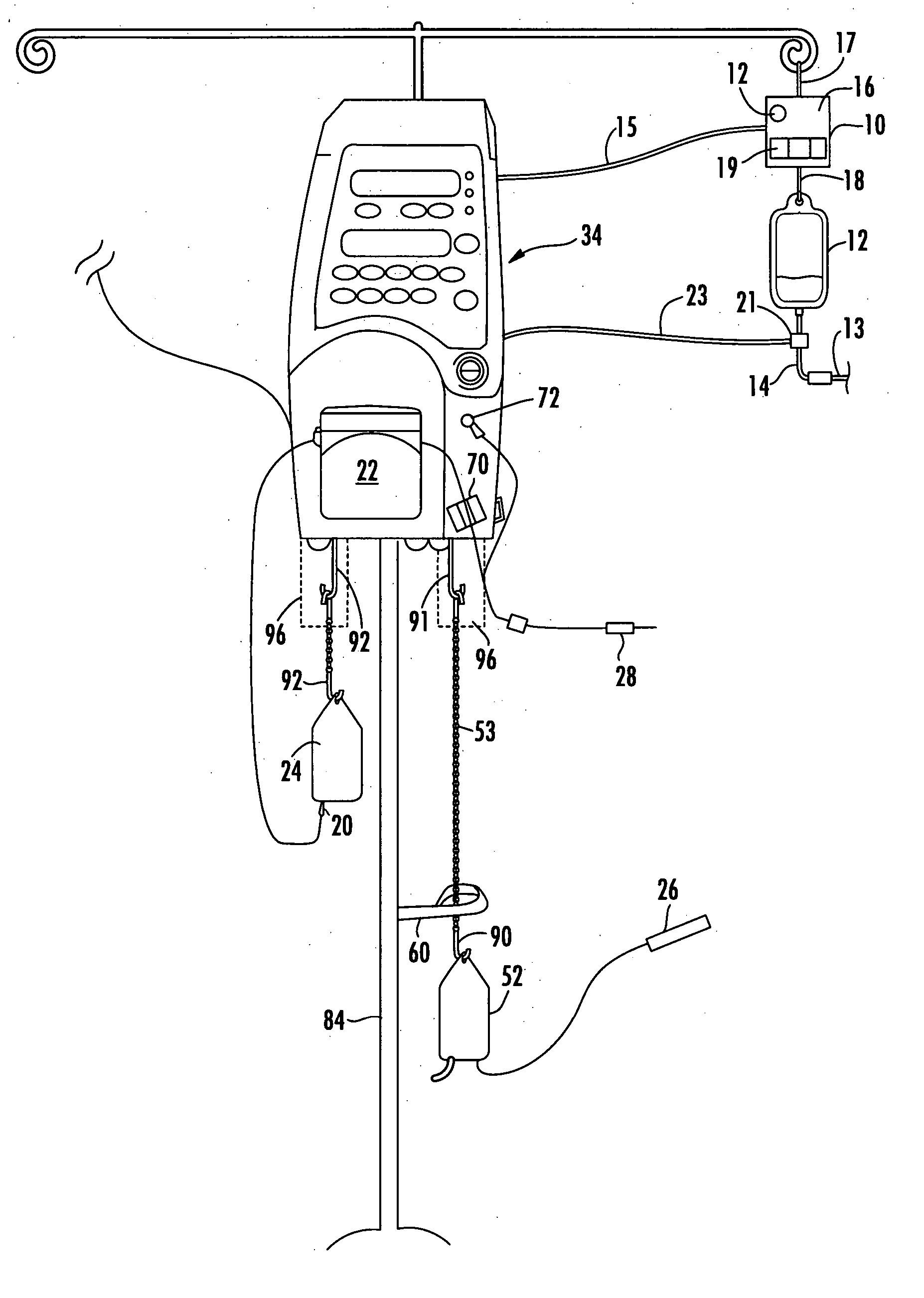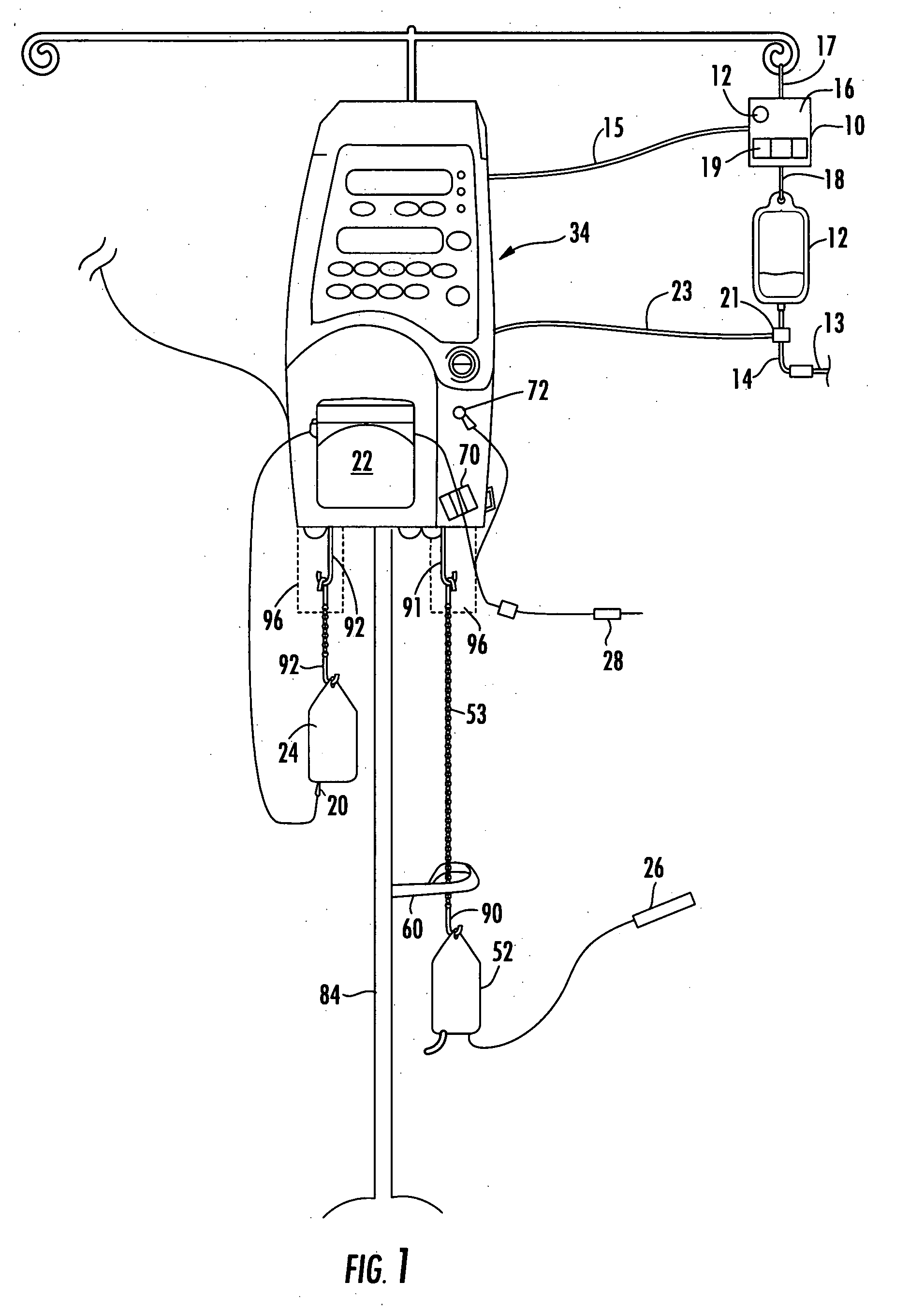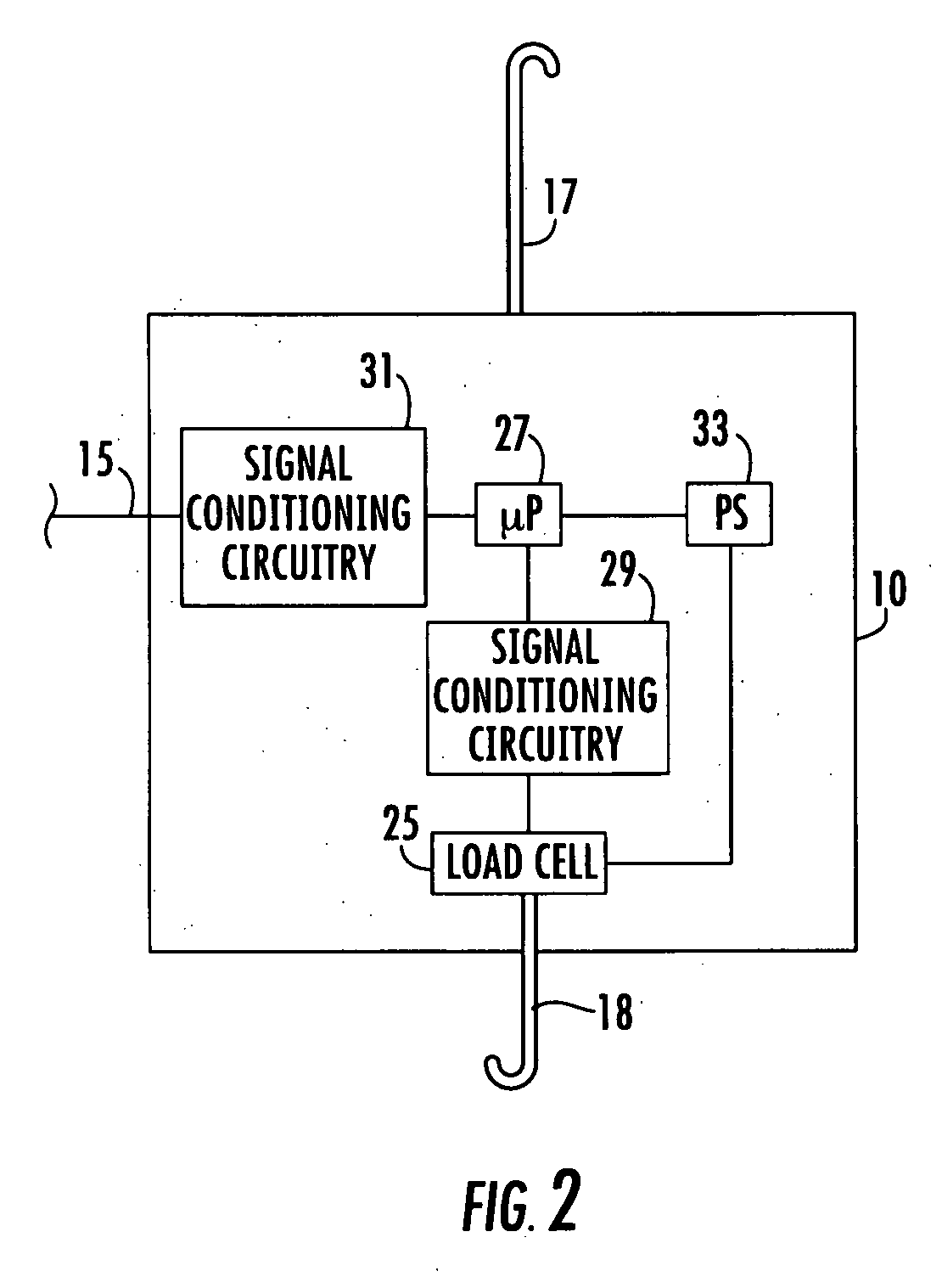Patient hydration/fluid administration system and method
a technology for hydration and patients, applied in the field of patient hydration system and method, can solve the problems of patient dehydration, radiocontrast media can be toxic to the patient, and patients who already suffer from various medical problems, so as to prevent dehydration, overhydration, and prevent kidney damage in patients. , the effect of preventing dehydration
- Summary
- Abstract
- Description
- Claims
- Application Information
AI Technical Summary
Benefits of technology
Problems solved by technology
Method used
Image
Examples
Embodiment Construction
[0046] Aside from the preferred embodiment or embodiments disclosed below, this invention is capable of other embodiments and of being practiced or being carried out in various ways. Thus, it is to be understood that the invention is not limited in its application to the details of construction and the arrangements of components set forth in the following description or illustrated in the drawings. If only one embodiment is described herein, the claims hereof are not to be limited to that embodiment. Moreover, the claims hereof are not to be read restrictively unless there is clear and convincing evidence manifesting a certain exclusion, restriction, or disclaimer.
[0047] One preferred example of a patient hydration system according to this invention includes unit 34, FIG. 1 typically mounted on IV pole 84. Unit 34 has programmable controller electronics therein. There is an infusion subsystem including pump 22 responsive to source of infusion fluid 24 for infusing a patient with hy...
PUM
 Login to View More
Login to View More Abstract
Description
Claims
Application Information
 Login to View More
Login to View More - R&D
- Intellectual Property
- Life Sciences
- Materials
- Tech Scout
- Unparalleled Data Quality
- Higher Quality Content
- 60% Fewer Hallucinations
Browse by: Latest US Patents, China's latest patents, Technical Efficacy Thesaurus, Application Domain, Technology Topic, Popular Technical Reports.
© 2025 PatSnap. All rights reserved.Legal|Privacy policy|Modern Slavery Act Transparency Statement|Sitemap|About US| Contact US: help@patsnap.com



